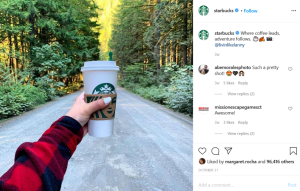It may have taken a little longer than expected, but it appears that digital wallets are finally on fire. Now, you can use a digital wallet to get more sales in 2020
MasterCard found that mobile wallets are growing, while an American Express survey shows that digital sales are also increasing – despite security concerns.
Simply put, if you’re a merchant, and haven’t jumped on the bandwagon yet, it’s the time to join the party. What’s that? You still don’t believe the hype? Read these ten ways that your business can use a digital wallet to get more sales.
1. Friction-less spending.
Digital wallets make spending easier for customers. That’s because they no longer have to dig through their wallets, purse, or pocket for exact change. They don’t have to hand over their last bit of cash to pay for groceries or gas.
The days of punching in PIN codes or signing receipts on dirty POS systems are over. Confirming a purchase to the cashier? Yep. That’s in the past too.
In other words, there are now fewer steps between want and own. And as a result, consumers will be more willing to make a purchase.
Apple Pay is one example of friction-less spending. It’s removed all barriers between wanting and owning products. Customers just have to wave their smartphone at the register and the items are theirs.
2. Simplifies loyalty.
“At the moment, you are choosing between five or six loyalty cards and hoping you can find that paper voucher that was in your pocket,” said Rob Harper, director of mobile commerce at PayPal back in 2015 . “I think a major opportunity is to combine all those elements into a single tap to pay at a counter or on a mobile.”
We’re not exactly there yet. But businesses are catching-on to using digital wallets to simplify loyalty programs. The most famous example is Starbucks. Their retailer wallet offers features like rewards programs, coupons, mobile order-ahead, and custom marketing.
The loyalty program has resulted in the Starbucks mobile app accounting for 25% of total in-store purchases.
3. Omnichannel experience.
Regardless if a customer is in-store, shopping online, or being targeted directly by emails and promotional SMS, they expect a seamless, omnichannel experience.
James Van Arsdale III, director of user experience for commerce solutions provider WebLinc, told Business News Daily that an optimized customer experience needs to be consistent across all channels.
“Having a mobile website to allow customers to shop from their phones isn’t solving the root of the problem — it’s a Band-Aid,” Van Arsdale said. “Customers want the same content, delivered to them on whatever device they want, so they don’t have to waste time searching.It’s all about tailoring the interface and content to easily allow customers to find what they’re looking for.”
This may also mean tailoring messages specifically for different markets, with Van Arsdale further noting that among younger demographics, SMS alerts convert more sales than emails do.
4. Mobile apps.
Another component of the omnichannel experience is the successful use of mobile apps. The Wall Street Journal explains that while shopping on the small screen used to be a challenge for customers, retailers have become increasingly better at their delivery.
“As consumers spend more of their days glued to smartphones, retailers are getting savvier with apps that ease browsing, offer rewards, suggest the right products and simplify the purchase to one click,” noted the WSJ report.
“The retailers that are succeeding are training their customers to think of their smartphones like an all-day impulse aisle. Apps are able to capture data available from handsets and push consumers to buy when they have a spare moment.”
5. Beacons.
Besides the explosion of mobile apps, beacons are used to target shoppers directly with personalized messages on their smartphones. These are also on well-positioned tablet kiosks when they’re within their proximity.
In fact, 75% of U.S. retailers have already added beacons to their marketing mix. But, beacons are expected to reach a 133% compound annual growth rate between 2016 and 2021 in personal tracking, retail, and advertising.
Best of all? Beacons aren’t regulated to larger businesses. Small- and medium-sized retailers have seen profits grow by 8% and reach an ROI of 365%.
6. Out of sight, out of mind.
What happens when you visit a convenience store, open your wallet, and notice that you only have Honest Abe staring back you? You’re probably not going to spend your last $ 5 on items that you don’t need, like that flavorful pack of gum.
But, what if that five dollars was in your bank account? You probably wouldn’t hesitate using your debit to pay for that pack of gum. Since your credit card and bank accounts are tied with your digital wallet, the same mentality is true.
In other words, it’s not as painful to part with money when we’re not physically holding it.
The less that we know about how much money we have left, the more likely we are to spend, spend, and spend some more. Of course, that’s not always the smartest budgeting technique, but it’s good for merchants.
7. Speed and convenience.
When you make it as easy as possible for your customers to pay, the more improved the customer experience will become. This in turn will create more loyal customers. Digital wallets can achieve this by speeding up the checkout process both online and in-store.
For example, customers no longer have to wait in line for EMV chip card payments to clear. They just wave their phone at the terminal and they’re done.
Additionally, making it easier for people to pay for goods on your eCommerce site will mean that there will be fewer abandoned shopping baskets since customers can securely checkout with just one-click.
8. Going beyond payments.
Besides paying for goods, digital wallets can notify customers about an expiring coupon, offer reward points, store loyalty cards, coupons, gift cards, tickets, and boarding passes.
As if that weren’t enough, digital wallets like Google, Apple, and Samsung, offer exclusive deals. Samsung Pay, for example, gave out quadruple points for every transaction during the 2016 holiday season.
9. Security.
Even though security is a barrier to overcome, it’s becoming increasingly known that digital wallets are very secure. This is because credit card numbers are not used for transactions. Instead, tokens – which are random 15- to 16-digit numbers that look and work like credit card numbers – are generated. This means if they are stolen, they’re useless.
When a customer registers their card, that information is stored in a token vault and managed by the service provider. This “reduces the attack surface to a few players. Mainly banks and other organizations where security is their primary job,” says Rob Clyde, Clyde is board director of the international IT governance trade group ISACA.
If you lose your device, simply de-register your credit cards from the mobile provider account.
10. Millennials.
You might may getting tired of hearing about Millennials. But, they’re worth discussing. After all, they’re the largest demographic, are extremely disruptive, and are the generation most likely to use digital wallets. Therefore, targeting this segment of your audience, you will be able to use a digital wallet to get more sales.
It’s been found that one in four millennials carries less than $ 5 cash on them. Meanwhile countries like Sweden, Belgium, the Netherlands, France, Canada, and Singapore are actively working towards a cashless society. Millennials are also more demanding of digital services.
If you want to attract this important generation, then you need to accept a digital wallet to get more sales in 2020.
Business & Finance Articles on Business 2 Community
(34)





